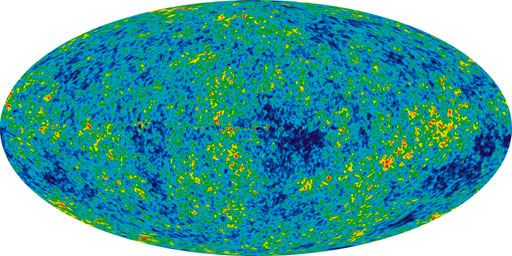
|
WMAP |
Universe is "full" of light: fossil light from Big Bang, discovered accidentally by Penzias and Wilson (1964) |
 |
Found that "noise" came from universe independent of what angle horn was pointed in: corresponded to a black-body temp of 30K Have to get above atmosphere and point away from Milky Way. |
 |
| Have to get above atmosphere and point away from Milky Way
Subsequent values came from balloon flights: Finally COBE launched 1990: Note the perfect Black Body curve. |
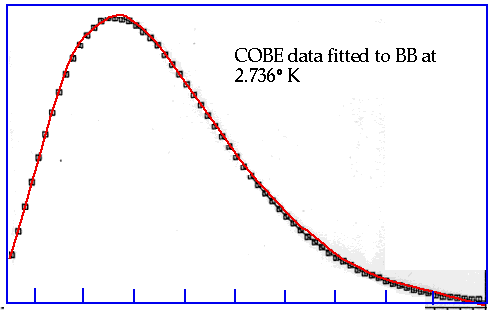 |
u = T⁴ × 8/15π5k⁴/(h³c³) = aT⁴ = 4σT⁴/c(Stef.-Boltz.) Photon density N ≈ 20 x 106 T³ m-3
which gives an exact expression for the temp: $$ \color{red}{ T^2 = \frac{1}{t}\sqrt {\frac{{3c^3 }}{{64\pi G\sigma }}} ,t = \frac{\xi }{{T^2 }}} $$
| Need the R dependence of energy density, ρ and the current ratio of photons to baryons
\color{red}{\eta = \frac{{n_b }}{{n_\gamma }} \approx 5 \times 10^{ - 10} }
suppose all the matter was non-relativistic(e.g. Baryons): Relativistic particles (i.e. γ's, ν's) get red-shifted as well, so \color{red}{\begin{array}{l}
\varepsilon _m = \frac{{\varepsilon _{m,0} }}{{a^3 }},\varepsilon _{m,0} = 9400 \\
\varepsilon _r = \frac{{\varepsilon _{r,0} }}{{a^4 }},\varepsilon _{r,0} = .26 \\
\end{array}}
We live in matter dominated universeρmatter >> ρrad,but it was not always thus |
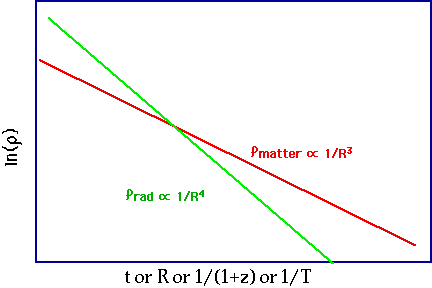 |
| The universe was originally opaque (i.e. mean free path of γ's very small) and hence CMBR was in thermal equilibrium with matter. Then the universe "condensed" (or froze) out. | 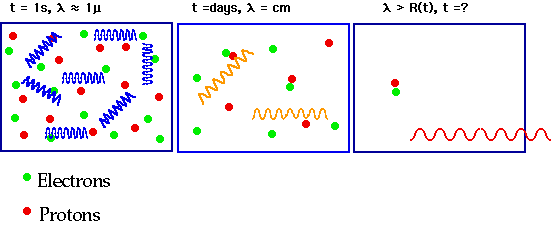 |
(Note, this is less than the 13.6 eV that you would expect: need Saha equation)
When was the temp 3700K?.τ ≈ ζ/T² ≈ 500,000 yrs, or 1+z ≈ T/T₀ ≈ 3700/2.736 ≈ 1360
| Temp. of the microwave sky in a scale in which blue is 0 K and red is 4 K. Note completely uniform on this scale. The actual temperature of the cosmic microwave background is 2.725 Kelvin. |  |
| WMAP measures at 5 wavelengths: longest wavelengths are most affected by galaxy |
Dipole effect: if we are moving through CMBR we would expect to see it "warmer" in front and "colder" behind.
|

|
| so CMBR is blue-shifted in the direction we are going in (note residual effect of galaxy): what do we expect for 600 km/s? | 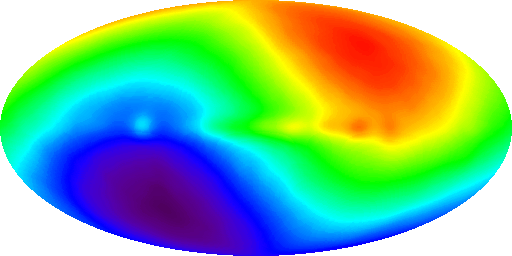
Credit: DMR, COBE, NASA, Four-Year Sky Map |
Except there is a tiny problem: some of the features in the CMBR seem to be aligned with the solar system....

| shows we are moving towards Leo at≈ 606 km/s | 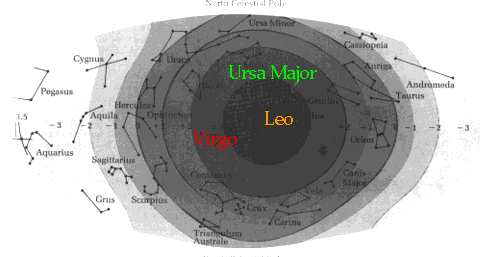 |
| Can just see structure at: ΔT/T ≈ 10-6: Indicates that the universe was very uniform back then. hotter where it is denser, and this shows where the galaxies should be forming |  |
| Well formed galaxies were there at z ≈ 1, t ≈ 3 ×109 years New observations suggest they are there at z ≈ 4.: Lyman forest shows hydrogen clouds present very early |
 |
| Angular size related to distance via
δ θ
\color{red}{
\delta \theta = \frac{l}{{d_A }}}
|
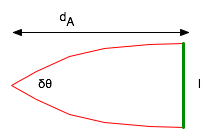 |
| COBE and WMAP comparison |
| Want to find correlation between temp at different points in the sky
\color{red}{
C\left( \theta \right) = \left\langle {\frac{{\delta T_1 }}{T}\frac{{\delta T_2 }}{T}} \right\rangle _{\cos \left( \theta \right)} }
|
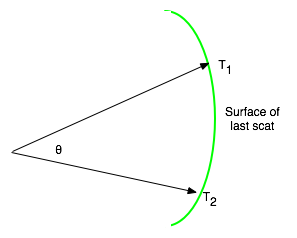 |
|
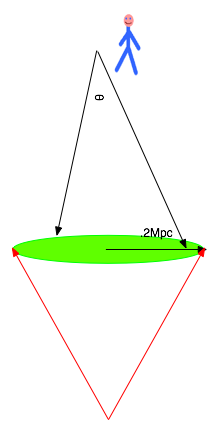 |
| COBE/BOOMERANG | 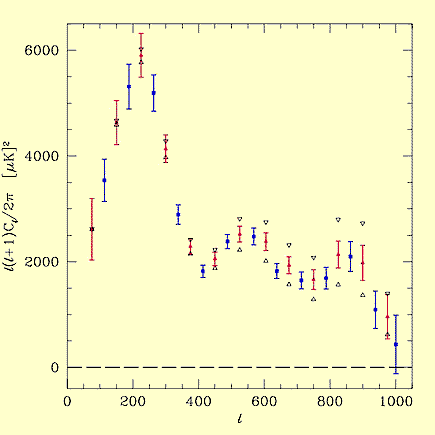 |
| WMAP | 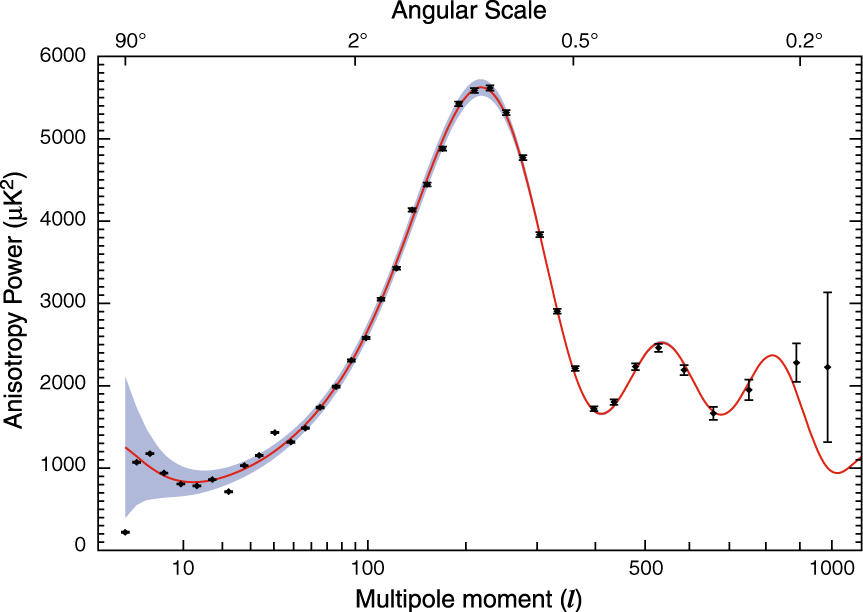 |
| Also, because of dependence of angular size on geometry, the multipole plot gives direct measurement of curvature |
|
 |
| Normally density fluctuations die away (e.g sound waves) but in massive fluid they get amplified by gravity |
|
 |
| Different models for gas: | 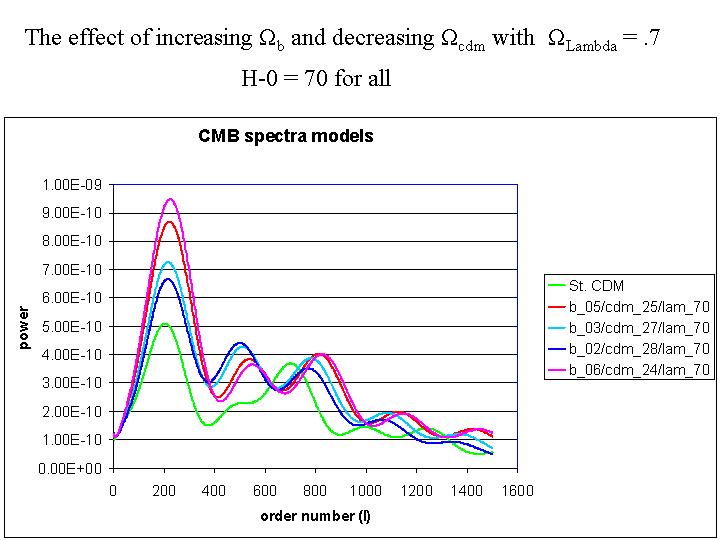 |
|
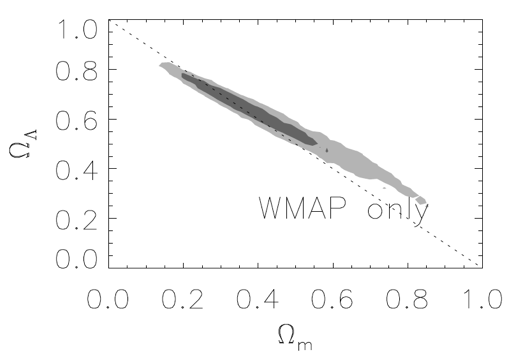 |